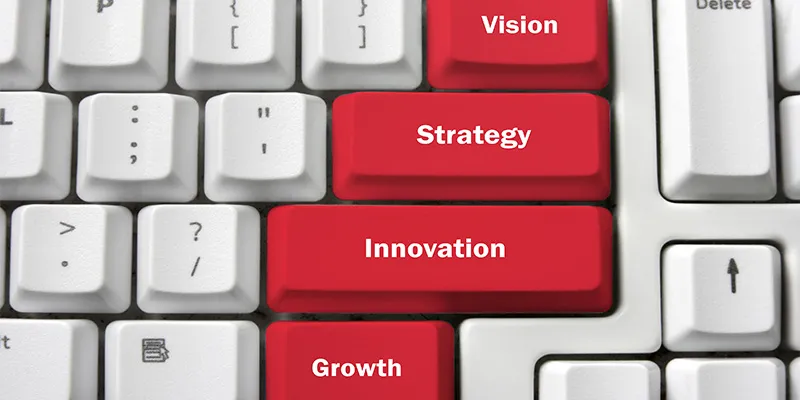The Lean Startup Way: steps to innovation success, by bestselling author Eric Ries
How can scaling startups add more professional managers without losing their experimentation culture? How can large enterprises adopt the principles of entrepreneurship and become systematically innovative? This book probes new frontiers of the Lean Startup movement.

Eric Ries is the author of the bestseller The Lean Startup (see my book review here). He has had his share of startup success and failures, eg There.com, IMVU. Eric advises startups and large enterprises on the use of Lean Startup principles for business transformation. (See also my reviews of the related books Disciplined Entrepreneurship,Creator’s Code,The Innovator’s DNA,andUnrelenting Innovation.)
His latest book is The Startup Way: How Modern Companies Use Entrepreneurial Management to Transform Culture and Drive Long-Term Growth. The 11 chapters in the book are spread across 320 pages; the appendix provides useful links for the Lean Startup conferences,Bionic (transformation and growth board consultancy), Moves The Needle (entrepreneurial transformation), Strategyzer (advocate of business model canvas tools), and Corporate Entrepreneur Community.
Companies such as Google, Intuit, Facebook, Twilio, Airbnb, and DropBox are cited as large but agile innovators, while traditional companies like Toyota and GE are taking lean startup principles to new dimensions. The book also shows how the US Federal Government is adopting the lean startup principles of ‘Thing big. Start small. Scale fast.’
Challenges for scaled startups and large enterprises
Eric defines a startup as a “human institution designed to create a new product or service under conditions of extreme uncertainty.” The challenge for startups at scale stage is to build systematic and predictive performance along with the ability to experiment rapidly, empower creative people, and manage innovation with rigour and accountability.
Large incumbent companies are trying to reinvigorate their culture with entrepreneurial energy and overcome their image of being too bureaucratic and political. They need to maximise their existing business while finding new sources of growth.
Eric lists five key principles behind the Startup Way philosophy: continuous innovation, startup as atomic unit of work, entrepreneurship as a core discipline, ‘second founding’ transformation, and rewired DNA for continuous transformation. This will help transform the model of the traditional business into a modern or entrepreneurial company (see my summary of this transformation in Table 1).
Table 1: Traditional v/s Entrepreneurial Companies
Lean Startup for life
Successful startups have a compelling vision, high-performance teams, iterative execution, equity structure, intense bonds, and powerful communication. Their bets and valuation are on magnitude and probability of their success (see my summary of Lean Startup elements in Table 2). “There’s something uniquely powerful about a small dedicated team trying to change the world,” says Eric.
Startups learn through ‘productive’ failures, and regard failures as some of their best teachers. A culture of trust keeps the focus on transparency, and openness helps admit to and learn from mistakes without fear of penalty.

Effective startup boards help keep the focus on learning and action on metrics such as product value, customer engagement, satisfaction, unit economics, cost/revenue per customer, lifetime value, retention rate, repeat usage, referral rate, conversion rates, and channel adoption.These are captured in the Value Hypothesis (‘is there customer delight’) and Growth Hypothesis (‘given some customers, how can we get more’).
But startups also need to grow the new business while looking out for the next big thing. Their initial velocity and agility seems to drop once they start scaling in size, and they need to work extra hard to remember their early lessons and regain their creative edge.
Startups hire professionals with ‘big company DNA’ but these managers also need to be reoriented into a startup culture. Founders need to invest in the training, coaching and mentoring of the next rung of entrepreneurial leaders. This requires a focus on accountability, process, and culture through a matrix-like addition of entrepreneurship as a function as well as an enabler of all functions.
For example, DropBox launched two new products, Mailbox and Carousel, but they turned out to be failures because the company was not listening properly to its customers. The company went back to its experimentation roots, and successfully launched its next product, DropBox Paper.
AirBnB began to look for new opportunities after its initial offerings, and formed an internal incubation programme called Project Snow White (‘startup within a startup’). It created the time and space to experiment with new markets like business travel.
Table 2: Elements of Lean Startup
Lean Startup transformation of a large enterprise
Large companies have come up with Six Sigma, lean manufacturing, standardisation and mass production. But they are also risk averse (especially with respect to cannibalising existing products), and failure has a high price tag. Many corporate managers tend to view entrepreneurs as rule breakers with little discipline or commitment.
By inculcating an entrepreneurial mindset and process toolbox, large companies can find hidden creative talent. “Good ideas come from unexpected places,” says Eric, they can come from any level of the organisation. Companies must create a culture of transparency without fear of recrimination for criticism or failed experiments (I have summarised these three phases and levels of transformation in Table 3).
Instead of only relying on long-term stealth ‘skunkworks’ projects, corporates should also get feedback, input and ideas from customers as early as possible. This should cover design features, pricing points, financing models, and competing offerings. Employees should also get comfortable admitting areas of ignorance about the customer, and how they will commit to knowing more.

For example, Amazon has a portfolio of experiments run across a collection of businesses. It has gone through a number of failed products as well, such as the Fire phone. But instead of having the team shut down (Lab126), they learned from their experience and moved on to new products like Echo, Alexa and tablets. Its CEO Jeff Bezos says this is like using “lemonade stand” skills to opening hamburger and hot dog stands.
Examples of large organisations that have implemented elements of the Lean Startup Way include GE (FastWorks, Imagination Breakthrough, GE Beliefs, GE Ventures), Intuit (Design for Delight, MVP Catalogue), US Federal Government (Presidential Innovation Fellows to rope in industry experts; US Digital Services Playbook), Toyota (connected cars), Global Innovation Fund (metered funding for social enterprises), and Citi (Discover 10X programme, Deal Days).
Table 3: Lean Startup applied to a large enterprise
Coaching and mentorship play a key role in entrepreneurial transformation. Examples include TechStars (Mentor Manifesto), IBM (Agile Doctors), Cisco (My Innovation). Eventually, this will help recruit, reward and retain entrepreneurial talent in the firm.
In the long run, entrepreneurship’s experimental and growth-oriented mindset can help create a more innovative and inclusive society. “Universal entrepreneurial opportunity” can be a source of renewal and enlarged possibilities. “As more and more people are given the chance to try their hand at entrepreneurship, the world will never be the same,” Eric signs off.
The book has a number of useful and inspiring quotes, and it would be good to end this review with some of them.
Hypergrowth for a company also requires hypergrowth of the people inside it. - Joe Zadeh, AirBnB
Even companies that seem to have launched one good product won’t easily know how to do it again. – Aditya Agarwal, DropBox
Plans are useless, but planning is indispensible. – Dwight Eisenhower
No tree survives, nor does it come a forest, if it doesn’t plant more seeds around itself. – Joe Gebbia, AirBnB








